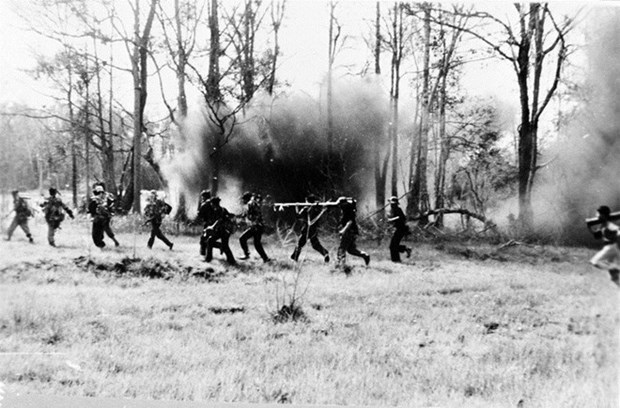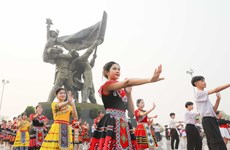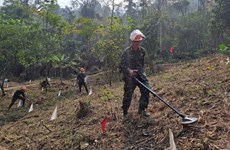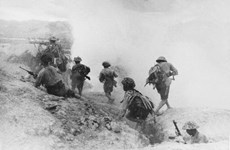1968 uprising lessons remain significant to Vietnam today
The General Offensive and Uprising in spring 1968 has left valuable historical lessons, especially those on how to promote the strength of the national great unity in the nation building and safeguarding cause today.
 Vietnam's soldiers chased enemies in an offensive on January 2, 1968 (Source: VNA)
Vietnam's soldiers chased enemies in an offensive on January 2, 1968 (Source: VNA)Hanoi (VNA) – The Mau Than General Offensive and Uprising in spring 1968 has left valuable historical lessons, especially those on how to promote the strength of the national great unity in the nation building and safeguarding cause today.
The statement was made by Nguyen Van Hung, deputy head of the Party Central Committee’s Commission for Mass Mobilisation, at a symposium on the general offensive and uprising held by the Ho Chi Minh National Academy of Politics in Hanoi on January 26.
The lessons stressed the need to gather high consensus of the entire Party, army and people under the sound leadership of the Party Central Committee and the strategic directions of the Central Military Commission; to specify clearly defence and security tasks in the national protection; to involve the entire people in defense and security; and to take advantage of support and help from international friends, according to Hung.
At the symposium, delegates focused on clarifying the sound guidelines and leadership of the Party Central Committee, the Political Bureau, and the Central Executive Committee of the People's Revolutionary Party of South Vietnam in the Mau Than General Offensive and Uprising.
They analysed the reasons behind the victory and historical lessons of the general offensive and uprising for the resistance war against US forces and the nation’s revolutionary cause.
Associate Professor, Doctor Nguyen Manh Ha from the Institute of Party History said that the general offensive and uprising was a turning point of the resistance war. It had been the biggest military effort and showed the highest determination to win of the entire Party, army and people since the beginning of the war.
It also created the most strong wave of protests against the US’s war in the US itself and all over the world, Ha added.
The general offensive and uprising began in the early morning of January 31 in 1968 when liberation forces at the same time launched attacks on the enemy’s bases in cities such as Hue, Da Nang, Quy Nhon and Sai Gon, and hundreds of towns from Quang Tri to Ca Mau.
The offensive helped the liberation forces destroy huge amounts of facilities and logistics used by the US and the Southern regime’s armies.
People in rural areas also took this opportunity to rise up against the US-backed government’s administration at commune and district levels.
Sai Gon-Gia Dinh (now HCM City), the headquarters of the US-backed Southern regime, was a focus of the Mau Than offensive.-VNA












